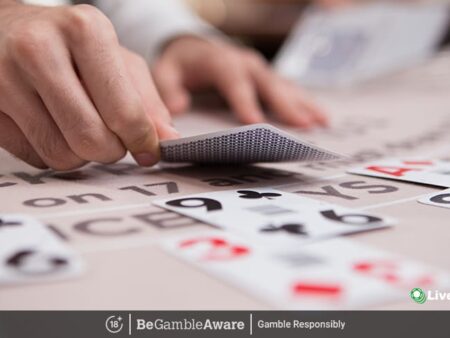Reading Time: 3 minutes Baccarat is a simple, fast-paced game every casino enthusiast enjoys, partly due to its straightforward nature. The draw of the third card looks like the only complicated thing about baccarat, as it is confusing when it is drawn and when it is not. It might seem irrelevant, for the dealer runs the game from start to finish, but it is more enjoyable when you know what is happening.
Baccarat Third Card Rule Explained




This article will examine the third-card rules in this game and tell you who gets the third card and when. You might be interested in knowing if the Player can be the only one to get the third card. Keep reading to find out.
Third Card Rules in Brief
The three rules are important to remember, coming one after another. If the Player’s total is 0-5, he draws a third card; otherwise, he stands. If he has 6 or more and has not drawn a card, the first rule applies to the Banker. If the Player draws another card, the Banker determines whether to draw or stand based on the Player’s total and third card.
If you remember the first two rules and use them in a live game, you could eventually become an expert in baccarat. However, it is only possible to become an ace if the third rule becomes second nature to you. When you put enough time into it, it is not that complicated, as you will see in the later sections.
Primary Baccarat Rules
Let us take a step back and cover the basic rules to make sure everything is clear. The two sides, the Player and the Banker, play against each other, and the side with a total closer to 9 wins. If the score is the same, it is a Tie, and you can play as either side, assuming the role of the Player or a Banker.
Faces do not bring points, while Aces count as 1. The other cards are worth their value, but the last digit counts if 2 numbers are present. For example, if the cards are 7 and 8, the total is 5, counting only the last digit. The best totals are 9 and 8, while the worst is 10, for it counts as zero. If they come from the first 2 cards, the totals of 8 and 9 are called a natural.
The Third Card Rule
It is important to make a difference and know when each side takes an extra card. When a Banker or a Player gets a natural, the other side is forbidden from taking another card. However, when it fails to happen, the Banker or the Player must draw the third card.
A Player will stand if he has a total from 6 to 9 and draw another card if the total is 0-5. On the other hand, the Banker has to look at the Player’s total and behave in the same way if the Player had 6 or more and did not draw the extra card. However, if the Player’s third card is on the table, a new set of rules comes in.
The Banker’s first two cards and the Player’s third card are used to determine the next move. If the Banker’s first two cards total 0-2, he always draws. If the Banker’s hand totals 3, another card is dealt unless the Player’s last card is 8. In addition, if the initial total is 4, the Banker’s third card is dealt if the Player has 2-7.
However, that is not all. If the total is 5, the third Player’s card should be 4-7 for another card to be drawn. If the Banker’s total is 6, he will take another card if the Player’s extra card is 6 or 7. Finally, if the Banker totals 8 or 9, he wins immediately if the Player does not match the total.
Third Card Rule Chart
Everything stated above makes a lot of sense if you have experience, but it might sound a bit overwhelming if you are still new. The handy little third-card chart can be used for reference, but it can only be used if the Player has three cards on the table. Based on the Player’s third card, the chart shows what the next move should be if you are the Banker.
The Importance of the Third Card Rule
The most common tip that beginners get when they start playing is that the Banker is better than the Player. It is true, even though Banker wagers pay a 5% fee on all payouts. The Banker has a better chance to win, with the odds being 45.8% vs 44.6%.
The Tie counts as a Push, and the likelihood of the Banker winning is about 51:49.
The 5% commission is not a big deal and contributes to a better RTP in the long run. To be precise, the Banker house edge is 1.04%, while the Player has 1.24%.
Why Does the Banker Wager Win More?
The Banker draws the third card only if necessary, and he has an unfavourable hand in comparison to the Player. The strength of the Banker’s hand depends on how strong the other side is. On the other hand, the Player has to draw regardless of the Banker’s hand, and the most likely value is 0. Due to the frequency and weakness of the face cards, the odds are not on the Player’s side.
For example, with a total of 5, the only cards to strengthen the Player’s hand are 1-4. Other alternatives do not do anything or make the hand even weaker. According to the statistics, it sounds a lot worse than it really is, with a house edge difference of barely 0.18%. Keep an eye on livecasino24.com for more expert analyses and guides.











